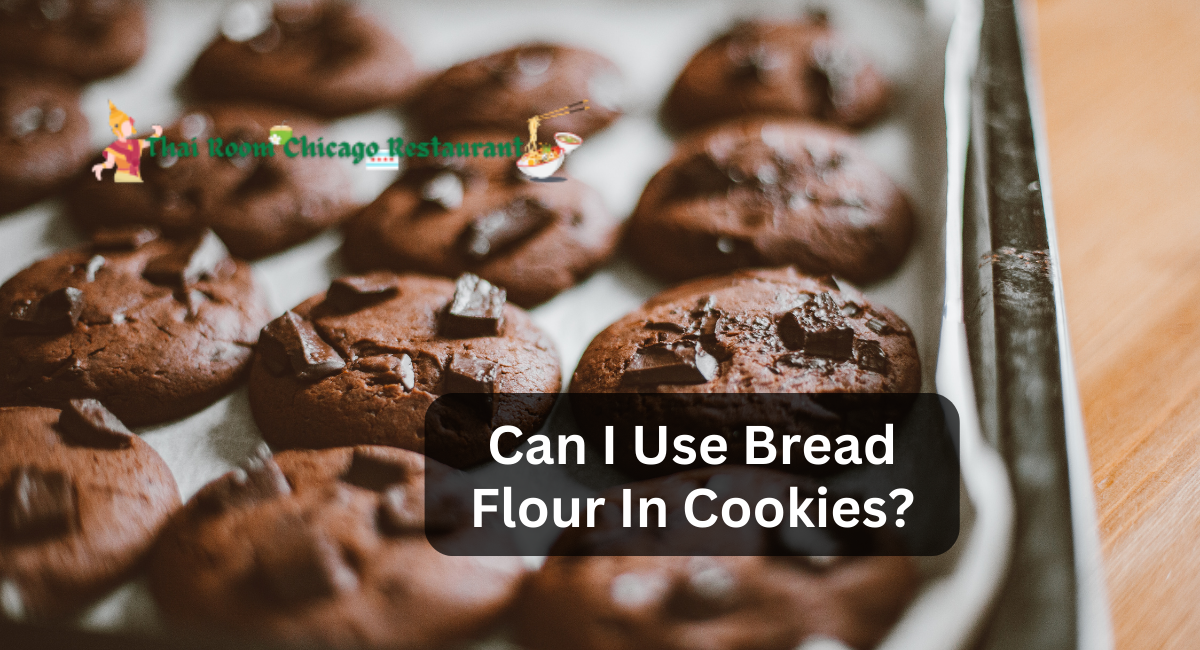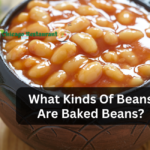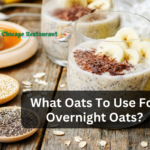When preparing cookies, the type of flour used can substantially affect the final product’s texture and flavor.
While all-purpose flour is commonly used in cookie recipes, you may ponder whether bread flour can be substituted.
This article explores the possibility of substituting bread flour for all-purpose flour in cookies, discussing the potential benefits and considerations to help you determine if this substitution is appropriate for your baking endeavors.
Can I Use Bread Flour In Cookies?
Yes, bread flour can be used in cookies, although the results will change slightly from those obtained with all-purpose flour.
Bread flour contains more protein than all-purpose flour, resulting in biscuits with a somewhat different texture and chewier consistency.
Keep the following in mind if you decide to use bread flour in your cookie recipe:
1. Bread Flour And Cookie Texture
In desserts, bread flour can be used instead of all-purpose flour without changing the taste. Instead, the change will change the way the final result feels. The end result? Cookies that are chewier than the same thing made with all-purpose flour.
Now, everyone has a unique conception of the ideal biscuit texture. Some prefer thin and crispy, whereas others prefer incredibly tender and undercooked. If you want your cookies to be chewy and flexible, bread flour could be a helpful addition.
2. The Power Of Protein
Different kinds of flour can be told apart by how much protein they have. When you pick up a bag of flour, you’ll probably see that the protein amount is written right on the front.
This is because the amount of protein in flour has a big effect on how it works when baking, which affects the final product.
The amount of gluten that forms when water is added to flour depends on how much protein it has.
The dough is stronger when there is more gluten growth. Also, flours that have more protein can soak up more liquid than flours that have less protein.
Different types of baking call for flour with different amounts of protein, which is why we make so many different kinds.
For example, cake flour is minimal in protein (10%), so cakes will be tender and light without significant gluten development.
In contrast, bread flour has a protein content of 12.7%; this higher protein content facilitates strong, elastic bread doughs that result in high-rising loaves.
As a point of reference, our all-purpose flour contains 11.7% protein. By substituting bread flour for all-purpose flour in cookies, we increase the protein content to promote increased gluten formation and dough retention. This results in increased chewiness.
3. Adjusting The Recipe
You may need to adjust to obtain the desired texture and consistency when substituting bread flour for all-purpose flour in a cookie recipe.
To compensate for bread flour’s greater absorption rate, you may need to slightly increase the liquid content (e.g., by adding a touch more milk or another liquid ingredient). All-purpose flour can absorb more moisture than bread flour.
4. Experimentation
Combining elements of science and art, baking frequently requires experimentation to achieve optimal results.
If you’re curious about using bread flour in cookies, consider attempting it with a small batch first to see if you like the texture and flavor it produces.
5. Customization
You can also experiment with various bread and all-purpose flour ratios to find the right balance for your cookie recipe.
For example, you could use a combination of both flours to maintain some chewiness while keeping the biscuits tender.
6. Gluten Formation
When flour and fluids are combined to generate dough, the flour proteins, particularly gluten, form a network.
Gluten is responsible for the form and elasticity of baked foods. Bread flour contains more protein than all-purpose flour; thus, when combined, they can produce more gluten.
7. Adjustments
Adapting a cookie recipe for bread flour may require the following modifications:
Increase the liquid: As bread flour absorbs more moisture than all-purpose flour, adding additional juice (such as milk or water) to cookie dough may be necessary to preserve the desired consistency.
8. Flavor
Bread flour tastes a little bit like wheat because it has more protein, but in most cookie recipes, this isn’t a big deal.
9. Cookie Type
The type of pastry you create can also affect whether bread flour is the best option. For instance, some people prefer chewy chocolate chip cookies, while others prefer moist and gooey. Your selection of flour can accommodate your desired texture.
10. Personal Preference
Baking frequently entails individual preference. If you appreciate experimenting in the kitchen, you could make a small batch of cookies with bread flour and compare them to those made with all-purpose flour to determine which you prefer.
Tips
1. Measure Accurately
Use accurate measuring glasses and spoons to guarantee that you use the correct ingredients in your recipes. Baking is a science, and minute differences in measurement can influence the outcome.
2. Room Temperature Ingredients
Many pastry recipes call for ingredients at room temperature, such as butter, eggs, and milk. Bringing these ingredients to room temperature ensures uniform blending and improved results.
3. Preheat The Oven
Before placing baked products in the oven, always preheat them to the specified temperature. This assures even baking from the start.
4. Invest In Good Tools
The quality of your baking equipment, such as parchment paper, a digital kitchen scale, and a dependable oven thermometer, can significantly impact your culinary success.
5. Sifting Dry Ingredients
Flour and other dry ingredients can be sifted to eliminate particles, incorporate air, and ensure an even distribution of leavening agents such as baking powder and baking soda.
6. Don’t Overmix
Overmixing can cause baked products to be harsh or dense. Follow the recipe’s instructions for blending times and mix until ingredients are combined.
7. Follow Recipe Instructions
Baking is a precise science, so follow the recipe instructions attentively, including measurements, timings, and temperature settings.
8. Use The Right Pan
Various recipes may call for specific pans (e.g., cake trays, muffin tins, cookie sheets). Using the proper baking dish can affect the outcome of baked products.
9. Cool Properly
Per the recipe’s instructions, allow baked goods to cool in the pan or on a wire tray. This prevents them from becoming moist and deformed.
10. Practice Patience
Frequently, baking requires perseverance. Be patient when awaiting the rise of dough or batter, the cooling of biscuits, or the setting of cakes. Rushing can lead to less-than-ideal results.
In cooking, remember that practice makes perfect. Refrain from disheartening by the occasional mishap; even seasoned artisans face obstacles. Continue experimenting and gaining knowledge from your experiences to enhance your culinary abilities over time.
Thanks for reading. I hope you find it helpful.










